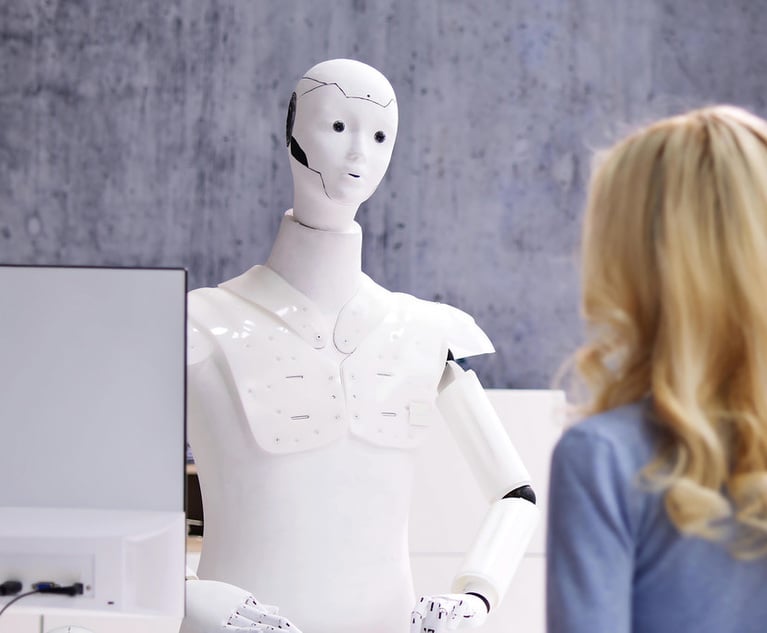 Credit: Nuthawut/Adobe Stock
Credit: Nuthawut/Adobe Stock I-9 Compliance in a Post-COVID World
"It is likely these questions will not be answered until audits have been conducted, fines are levied, and lawsuits are filed and settled or decided," write Stacey A. Simon and Lisa Ryu of Meyner and Landis.
June 24, 2024 at 02:00 PM
10 minute read
The Department of Homeland Security (DHS) requires that all employers in the U.S. complete Form I-9, Employment Eligibility Verification, for all employees hired, regardless of their citizenship status. Form I-9 is used to verify the identity and the employment eligibility of the employee. The Form I-9 verification process has historically involved the participation of both the employee and the employer, including the completion of specifically designated sections of the Form I-9 by the employee and employer, the in-person physical inspection of the required verification documents presented to the employer by the employee, and proper retention of the completed forms and records by the employer for the mandated period of time. Failure to do so properly can result in significant fines and penalties for the employer.
Recent History of Changes to Form I-9 Compliance Obligations
On March 20, 2020, in light of the precautions implemented by employers due to the COVID-19 pandemic, DHS announced that it would exercise discretion to temporarily defer the in-person verification requirements associated with Form I-9 under Section 274A of the Immigration and Nationality Act (INA). Such flexibilities were accompanied by DHS guidance which stated that employers with employees taking physical proximity precautions due to COVID-19 will not be required to review the employee's identity and employment authorization documents in the employee's physical presence. Instead, in the face of this international health crisis DHS instituted a provision that allowed employers to inspect employees' documents remotely and obtain copies within three business days. Further, all employees who were onboarded using remote verification must report to their employer within three business days of the resumption of "normal operations" for in-person verification.
This content has been archived. It is available through our partners, LexisNexis® and Bloomberg Law.
To view this content, please continue to their sites.
Not a Lexis Subscriber?
Subscribe Now
Not a Bloomberg Law Subscriber?
Subscribe Now
NOT FOR REPRINT
© 2025 ALM Global, LLC, All Rights Reserved. Request academic re-use from www.copyright.com. All other uses, submit a request to [email protected]. For more information visit Asset & Logo Licensing.
You Might Like
View All
After DEI Rollbacks, Employment Lawyers See Potential For Targeting Corporate Commitment to Equality
7 minute read

Arbitrators Under Fire for Allegedly Forcing Workers to 'Stay or Pay' Employers
5 minute read
Trending Stories
- 1How This Dark Horse Firm Became a Major Player in China
- 2Bar Commission Drops Case Against Paxton—But He Wants More
- 3Pardons and Acceptance: Take It or Leave It?
- 4Gibbons Reps Asylum Seekers in $6M Suit Over 2018 ‘Inhumane’ Immigration Policy
- 5DC Judge Chutkan Allows Jenner's $8M Unpaid Legal Fees Lawsuit to Proceed Against Sierra Leone
Who Got The Work
J. Brugh Lower of Gibbons has entered an appearance for industrial equipment supplier Devco Corporation in a pending trademark infringement lawsuit. The suit, accusing the defendant of selling knock-off Graco products, was filed Dec. 18 in New Jersey District Court by Rivkin Radler on behalf of Graco Inc. and Graco Minnesota. The case, assigned to U.S. District Judge Zahid N. Quraishi, is 3:24-cv-11294, Graco Inc. et al v. Devco Corporation.
Who Got The Work
Rebecca Maller-Stein and Kent A. Yalowitz of Arnold & Porter Kaye Scholer have entered their appearances for Hanaco Venture Capital and its executives, Lior Prosor and David Frankel, in a pending securities lawsuit. The action, filed on Dec. 24 in New York Southern District Court by Zell, Aron & Co. on behalf of Goldeneye Advisors, accuses the defendants of negligently and fraudulently managing the plaintiff's $1 million investment. The case, assigned to U.S. District Judge Vernon S. Broderick, is 1:24-cv-09918, Goldeneye Advisors, LLC v. Hanaco Venture Capital, Ltd. et al.
Who Got The Work
Attorneys from A&O Shearman has stepped in as defense counsel for Toronto-Dominion Bank and other defendants in a pending securities class action. The suit, filed Dec. 11 in New York Southern District Court by Bleichmar Fonti & Auld, accuses the defendants of concealing the bank's 'pervasive' deficiencies in regards to its compliance with the Bank Secrecy Act and the quality of its anti-money laundering controls. The case, assigned to U.S. District Judge Arun Subramanian, is 1:24-cv-09445, Gonzalez v. The Toronto-Dominion Bank et al.
Who Got The Work
Crown Castle International, a Pennsylvania company providing shared communications infrastructure, has turned to Luke D. Wolf of Gordon Rees Scully Mansukhani to fend off a pending breach-of-contract lawsuit. The court action, filed Nov. 25 in Michigan Eastern District Court by Hooper Hathaway PC on behalf of The Town Residences LLC, accuses Crown Castle of failing to transfer approximately $30,000 in utility payments from T-Mobile in breach of a roof-top lease and assignment agreement. The case, assigned to U.S. District Judge Susan K. Declercq, is 2:24-cv-13131, The Town Residences LLC v. T-Mobile US, Inc. et al.
Who Got The Work
Wilfred P. Coronato and Daniel M. Schwartz of McCarter & English have stepped in as defense counsel to Electrolux Home Products Inc. in a pending product liability lawsuit. The court action, filed Nov. 26 in New York Eastern District Court by Poulos Lopiccolo PC and Nagel Rice LLP on behalf of David Stern, alleges that the defendant's refrigerators’ drawers and shelving repeatedly break and fall apart within months after purchase. The case, assigned to U.S. District Judge Joan M. Azrack, is 2:24-cv-08204, Stern v. Electrolux Home Products, Inc.
Featured Firms
Law Offices of Gary Martin Hays & Associates, P.C.
(470) 294-1674
Law Offices of Mark E. Salomone
(857) 444-6468
Smith & Hassler
(713) 739-1250






